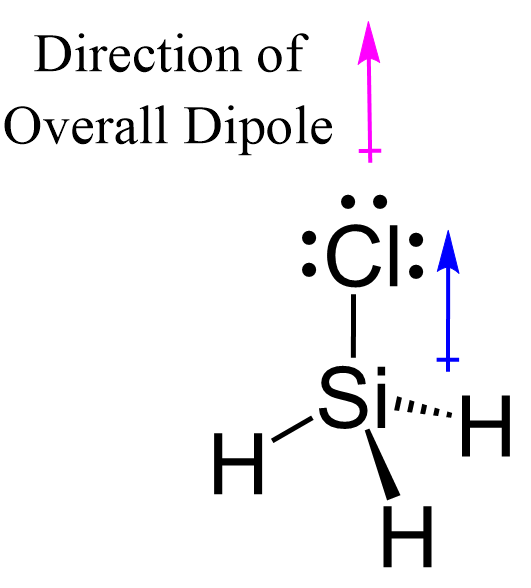To determine if SiH3Cl is polar or nonpolar, we need to first determine its geometry. This presumes knowing the rules for drawing a correct Lewis structure and you can find more details about Lewis structures here.
SiH3Cl has 4 + 3 + 7 = 14 valence electrons. Silicon goes in the middle and is bonded to three hydrogen and one chlorine atom. These four bonds take eight electrons, and the remaining six go on Cl as three lone pairs:

The steric number is four (four atoms and no lone pairs on carbon) and therefore, both electron and molecular geometries are tetrahedral.

Now, the polarity: The first thing here is to determine if the Si-Cl bond is polar. Depending on the difference in the electronegativity values, covalent bonds can be polar and nonpolar.

- If the difference in electronegativity is less than 0.5, the electrons are about equally shared between the two atoms, forming a nonpolar a covalent bond.
- If the difference in electronegativity is between 0.5 and 1.7, we have a polar covalent bond.
- A difference of 1.7 or higher is so large that the electrons are no longer shared, and an ionic bond is formed. Ionic bonds are formed between metals and nonmetals.
So, the Si-Cl bond is polar and the dipole is pointing to Cl as it is the more electronegative atom. Because there are no other polar bonds, and hence dipole moment, the overall molecule also has a dipole pointing in the same direction.

Check this 99-question multiple-choice quiz on Geometry and Hybridization:
Check Also
- The VSEPR Model
- VSEPR Theory Practice Problems
- Hybridization of Atomic Orbitals
- sp, sp2, sp3, sp3d, and sp3d2 Hybridization Practice Problems

